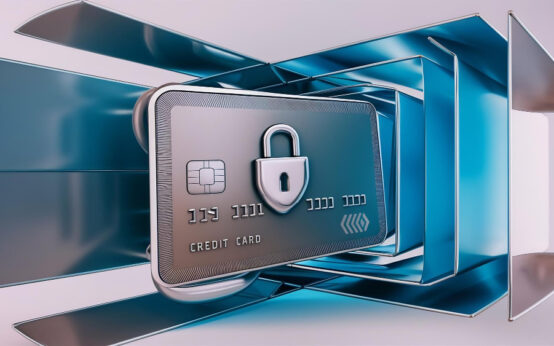Credit card fraud protection is crucial in today’s digital world. With increasing threats, understanding how to safeguard your finances can prevent significant losses. This article covers essential aspects like recognizing types of fraud, tips for protection, and what actions to take if you fall victim. Stay informed and secure your financial well-being effectively.
Understanding Credit Card Fraud
Credit card fraud is a form of theft where someone uses your credit card information without your permission. This illegal activity can happen both online and offline. To combat this, it is crucial to comprehend different fraud techniques.
Phishing: This is a method where fraudsters send fake emails or messages that appear legitimate to steal your credit card details.
Skimming: Skimming devices illegally capture your card information during a legitimate transaction.
The more you understand these methods, the better you can protect yourself against them. Always be vigilant and monitor your statements regularly for any unauthorized charges.
Common Types of Credit Card Fraud

Credit card fraud encompasses various tactics that criminals use to steal your financial information. Here are some common types of credit card fraud:
Skimming
Skimming involves copying the information from your card’s magnetic strip when you make a transaction. The thief uses a small device called a skimmer, usually placed on ATMs or at point-of-sale terminals.
Phishing
Phishing entails scammers posing as legitimate companies and sending emails or messages to trick you into providing your credit card details. They create fake websites that look credible to deceive you.
Card-not-present (CNP) fraud
CNP fraud occurs when the thief uses your credit card information to make online or phone purchases without physically having your card. This type of fraud is common in e-commerce transactions.
Account Takeover
In an account takeover, the fraudster gains access to your online banking or credit card account, often through data breaches or stolen passwords, and makes unauthorized transactions.
Counterfeit cards
Counterfeit card fraud involves cloning your credit card’s magnetic stripe data onto a blank card. The fraudster can then use the fake card for transactions as if it were the original.
Lost or stolen cards
If your credit card is physically lost or stolen, a thief can use it for purchases until you report it missing. Always act quickly in these situations to minimize potential damage.
Tips to Protect Your Credit Card
One of the primary steps to protect your credit card is to keep your card information confidential. Avoid sharing your card details, such as the card number, expiration date, and CVV, with anyone.
Secure Online Transactions:
Always use secure websites for online purchases. Look for ‘https’ in the URL and a padlock symbol. These indicators mean that the website is using encryption to protect your information.
Monitor your account regularly. Regularly check your bank statements and notify your card issuer of any suspicious transactions immediately.
Enable Alerts:
Set up transaction alerts. Most credit card providers offer services that notify you via email or text message whenever your card is used. This helps you quickly detect unauthorized usage.
Use strong and unique passwords for your online banking and shopping accounts. Change them often and avoid using easily guessable information.
Be wary of phishing scams. Do not click on links or open attachments in unsolicited emails. Verify the authenticity of the source if you are in doubt.
Use Contactless Payments Wisely:
Contactless payments are convenient but can be risky if not used cautiously. Ensure you only tap your card on trusted and secure terminals.
Lastly, consider leveraging advanced payment technology, such as tokenization and two-factor authentication (2FA), to add an extra layer of security.
What to Do If You Become a Victim

If you suspect that you have become a victim of credit card fraud, first take a deep breath and stay calm. Immediate and careful actions can prevent further damage. Here are the steps you should follow:
1. Contact Your Credit Card Issuer
Immediately notify your credit card issuer about the fraudulent activity. Use the emergency contact number usually found on the back of your card. They can freeze your account to prevent further unauthorized charges.
2. Review Recent Transactions
Go through recent transactions to identify any unauthorized purchases. Make a note of these charges as you will need to report them.
3. Report the Fraud to Credit Bureaus
Contact major credit bureaus (Experian, TransUnion, and Equifax) to place a fraud alert on your credit report. This makes it harder for fraudsters to open new accounts in your name.
4. File a Police Report
File a report with your local police department. This creates an official record that can help clear your name in case of disputes with creditors.
5. Monitor Your Accounts
After reporting the fraud, regularly check your credit card and bank statements for other suspicious activities. Utilize credit monitoring services for added security.
6. Consider Identity Theft Protection
Invest in identity theft protection services. They offer comprehensive monitoring and alerts, ensuring that any suspicious activities are flagged immediately.
7. Keep Records
Maintain detailed records of all communications and reports made with your credit card issuer, police, and credit bureaus. This can be invaluable for future reference or disputes.
By acting promptly and following these steps, you can minimize the damage caused by credit card fraud and protect your finances.
Best Tools and Services for Fraud Protection
Choosing the Right Tools
One of the most critical steps in protecting your finances is selecting the best tools and services for fraud protection. These tools help you monitor and secure your credit card transactions, making it harder for fraudsters to succeed. Look for tools that offer real-time alerts, detailed activity reports, and robust security features.
Fraud Detection Software
Fraud detection software uses algorithms to identify suspicious activity on your credit card. These programs analyze transaction patterns and flag any unusual behavior. Some popular fraud detection tools include Norton Identity Advisor, IdentityForce, and LifeLock. They provide comprehensive coverage and alerts to safeguard your financial data.
Credit Monitoring Services
Credit monitoring services keep an eye on your credit report and notify you of any changes. This can help you catch unauthorized activities early. Experian, Equifax, and TransUnion offer reliable credit monitoring services. These tools can alert you to new accounts opened in your name or significant changes to your credit score.
Multi-Factor Authentication (MFA)
Multi-Factor Authentication adds an extra layer of security to your online transactions. By requiring multiple forms of verification, MFA makes it more difficult for unauthorized users to access your accounts. Many credit card companies and financial institutions offer MFA as a security option.
Secure Browsing Tools
To protect your online transactions, use secure browsing tools like VPNs and anti-phishing software. These tools encrypt your data and protect you from malicious websites. NordVPN and McAfee Total Protection are examples of effective solutions to keep your browsing safe and secure.



 Best credit cards secured: your path to a stronger credit history <p style='text-transform:none; line-height:20px !important; font-size:16px; font-weight:normal; color:#424242; margin: 0px; margin-top:10px;'>They offer a smart way to show lenders you’re serious about managing your finances.</p>
Best credit cards secured: your path to a stronger credit history <p style='text-transform:none; line-height:20px !important; font-size:16px; font-weight:normal; color:#424242; margin: 0px; margin-top:10px;'>They offer a smart way to show lenders you’re serious about managing your finances.</p>  The best credit cards for lounge access: your key to premium airport comfort <p style='text-transform:none; line-height:20px !important; font-size:16px; font-weight:normal; color:#424242; margin: 0px; margin-top:10px;'>With these cards, you have exclusive access to lounges, offering comfort while you wait for your flight.</p>
The best credit cards for lounge access: your key to premium airport comfort <p style='text-transform:none; line-height:20px !important; font-size:16px; font-weight:normal; color:#424242; margin: 0px; margin-top:10px;'>With these cards, you have exclusive access to lounges, offering comfort while you wait for your flight.</p>  Safe, simple, and fun: discover the best debit cards for kids <p style='text-transform:none; line-height:20px !important; font-size:16px; font-weight:normal; color:#424242; margin: 0px; margin-top:10px;'>These cards offer the flexibility and convenience that both parents and kids need.</p>
Safe, simple, and fun: discover the best debit cards for kids <p style='text-transform:none; line-height:20px !important; font-size:16px; font-weight:normal; color:#424242; margin: 0px; margin-top:10px;'>These cards offer the flexibility and convenience that both parents and kids need.</p>